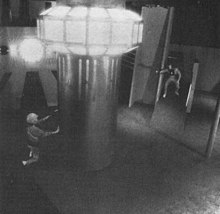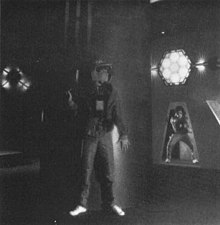
Shooting sports is a group of competitive and recreational sporting activities involving proficiency tests of accuracy, precision and speed in shooting — the art of using ranged weapons, mainly small arms and bows/crossbows.
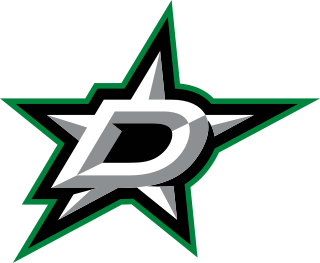
The Dallas Stars are a professional ice hockey team based in Dallas. The Stars compete in the National Hockey League (NHL) as a member of the Central Division in the Western Conference, and were founded during the 1967 NHL expansion as the Minnesota North Stars, based in Bloomington, Minnesota. Before the 1978–79 NHL season, the team merged with the Cleveland Barons after the league granted them permission due to each team's respective financial struggles. Eventually, the franchise relocated to Dallas for the 1993–94 NHL season where the team was rebranded as the Dallas Stars. The Stars played out of Reunion Arena located in downtown Dallas from their relocation in 1993 until 2001, when the team moved less than 1.5 miles (2.4 km) into the American Airlines Center located in the nearby Victory Park neighborhood of Dallas, an arena they share with the Dallas Mavericks of the National Basketball Association (NBA).

The Minnesota North Stars were a professional ice hockey team in the National Hockey League (NHL) for 26 seasons, from 1967 to 1993. The North Stars played their home games at the Met Center in Bloomington, Minnesota, and the team's colors for most of its history were green, yellow, gold and white. The North Stars played 2,062 regular season games and made the NHL playoffs 17 times, including two Stanley Cup Finals appearances, but were unable to win the Stanley Cup. After the 1992–93 season, the franchise moved to Dallas, and the team was renamed the Dallas Stars.

The NES Zapper, also known as the Video Shooting Series light gun in Japan, is an electronic light gun accessory for the Nintendo Entertainment System (NES) and the Japanese Famicom. It was released in Japan for the Famicom on February 18, 1984, and launched alongside the NES in North America in October 1985.

Dirk Werner Nowitzki is a German former professional basketball player who is a special advisor for the Dallas Mavericks of the National Basketball Association (NBA). Listed at 7 ft 0 in (2.13 m), he is widely regarded as one of the greatest power forwards of all time and is considered by many to be the greatest European player of all time. In 2021, he was selected to the NBA 75th Anniversary Team. In 2023, Nowitzki was inducted into the Naismith Memorial Basketball Hall of Fame.
Shooter video games or shooters are a subgenre of action video games where the focus is almost entirely on the defeat of the character's enemies using the weapons given to the player. Usually these weapons are firearms or some other long-range weapons, and can be used in combination with other tools such as grenades for indirect offense, armor for additional defense, or accessories such as telescopic sights to modify the behavior of the weapons. A common resource found in many shooter games is ammunition, armor or health, or upgrades which augment the player character's weapons.

Laser tag is a recreational shooting sport where participants use infrared-emitting light guns to tag designated targets. Infrared-sensitive signaling devices are commonly worn by each player to register hits and are sometimes integrated within the arena in which the game is played.
In shooter games, rocket jumping is the technique of using the knockback of an explosive weapon, most often a rocket launcher, to launch the shooter into the air. The aim of this technique is to reach heights, distances and speed that standard character movement cannot achieve. Although the origin of rocket jumping is unclear, its usage was popularized by Quake.

Gilbert Jay Arenas Jr. is an American former professional basketball player. Arenas attended Grant High School in the Valley Glen district of Los Angeles, and accepted a scholarship offer to the University of Arizona late in his junior year. He was drafted by the Golden State Warriors with the 31st overall pick in the 2001 NBA draft.
Q-ZAR is a type of laser tag that was developed by Geoff Haselhurst, Peter Robertson and Omnitronics in Perth, Western Australia. The rights were later sold to Leisureplex Ltd, a company based in Ireland which in turn sold them to Q-ZAR International based in Dallas, Texas.

B-Daman is a marble shooting toy franchise produced in Japan by Takara. It was originally based on the Bomberman series, but later expanded into other franchises and its own original designs.
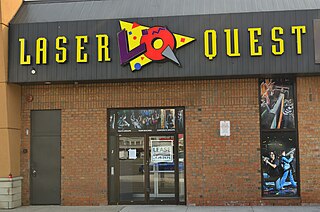
Laser Quest is a British indoor laser tag franchise founded in Manchester, United Kingdom in 1989. Its laser tag games use infrared (IR) hand-held units and vests. Laser Quest's oldest centre is located in Stourbridge, West Midlands, England.

The 1999 Stanley Cup Finals was the championship series of the National Hockey League's (NHL) 1998–99 season, and the culmination of the 1999 Stanley Cup playoffs. It was contested by the Eastern Conference champion Buffalo Sabres and the Western Conference champion Dallas Stars. It was the 106th year of the Stanley Cup being contested.

Laser Arena is an FPS PC game designed to simulate laser tag. Play modes include Free for All (Deathmatch), Team Match, Duel, Domination, and Mega Target. Players have three "health canisters", and every hit diminishes one of them. After three hits, the player counts as "dead" and has to respawn after a delay. The game is based on a heavily modified Quake engine, and despite being a budget-title, features some elements that were unique at the time of release. For example, the game models "Lasertag Grenades" which emit a vast number of shots in all directions, tagging every player in the vicinity.
Photon is a live action television show that aired in the mid-1980s, which was tied into the Photon lasertag arenas and home game. It was produced by DIC Enterprises as a first run syndicated kids series which shown in various syndicated markets through most of the mid-eighties. Animator Shinji Aramaki served as miniature model maker/designer on the special effects team for the series.
Darkzone, Laserzone, Megazone, Ultrazone and Zone 3 are a group of laser skirmish sites that use laser tag systems manufactured by P&C Micros of Melbourne, Australia. These systems and sites are sometimes collectively referred to as being a part of the "Zone Empire" and in most cases incorporate the word "Zone" in their name.

Lazer Tag is a brand name for the pursuit game using infrared toy guns, generically known as "laser tag". It was developed by Worlds of Wonder and launched in 1986. As one of America's top hit toys of 1986-1987, Lazer Tag was aggressively leveraged by Worlds of Wonder's retail sales network in an ultimatum to force the Nintendo Entertainment System into retail stores, allowing its smash hit nationwide launch, which prompted Nintendo of America to lead the nation's recovery from the 1983 video game crash and dominate the industry. The Lazer Tag brand is currently a subsidiary of Hasbro's Nerf toy line.
The history of the Golden State Warriors began in Philadelphia in 1946. In 1962, the franchise was relocated to San Francisco, California and became known as the San Francisco Warriors until 1971, when its name was changed to the current Golden State Warriors. Along with their inaugural championship win in the 1946–47 season, the Warriors have won six others in the team's history, including another in Philadelphia after the 1955–56 season, and five more as Golden State after the 1974–75, 2014–15, 2016–17, 2017–18 and 2021–22 seasons.
Battle Tag is a laser tag-shooter hybrid game developed and published by Ubisoft. The game was revealed at E3 2010 at the Ubisoft press conference. The game was released on November 2010 in Texas and Canada.
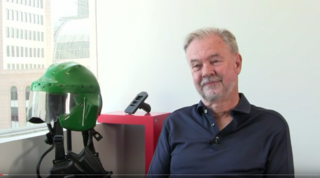
George Carter III is an inventor who created Photon, the first commercialized version of laser tag, as well as other inventions such as the personal watercraft and certain versions of all-terrain vehicles. George Carter invented the Photon after being inspired by Star Wars.

